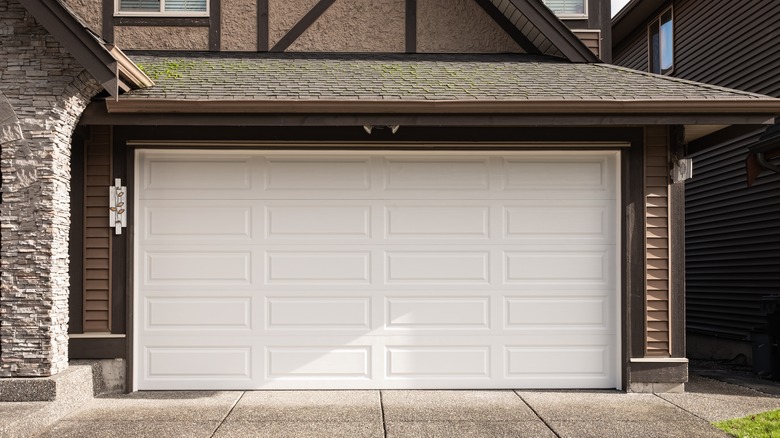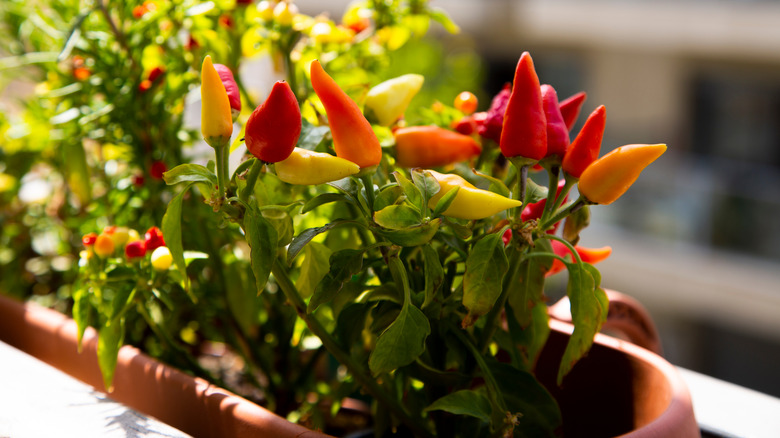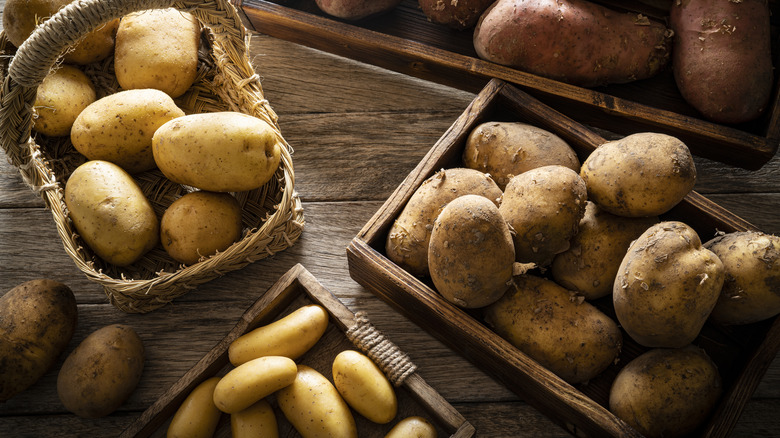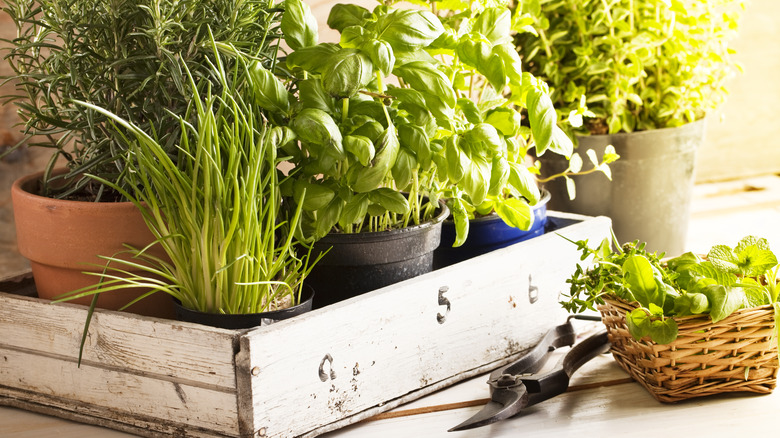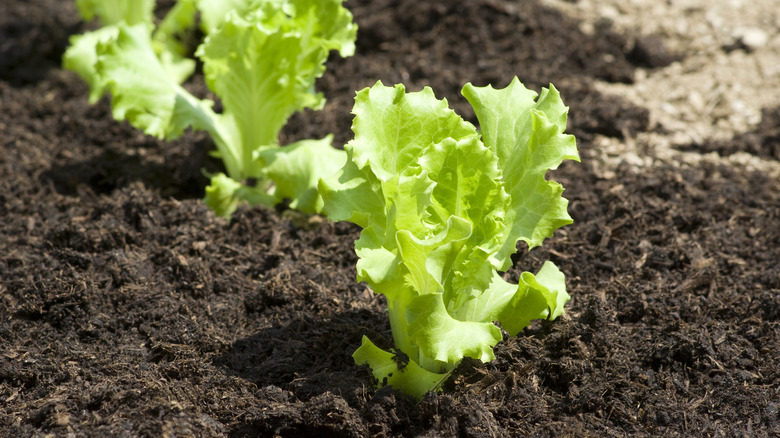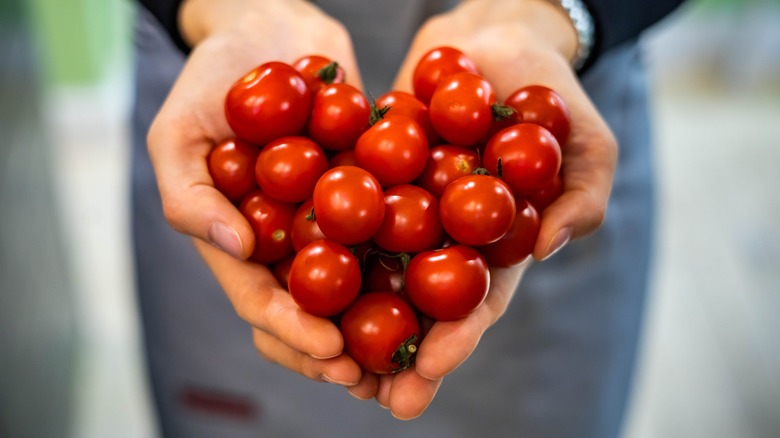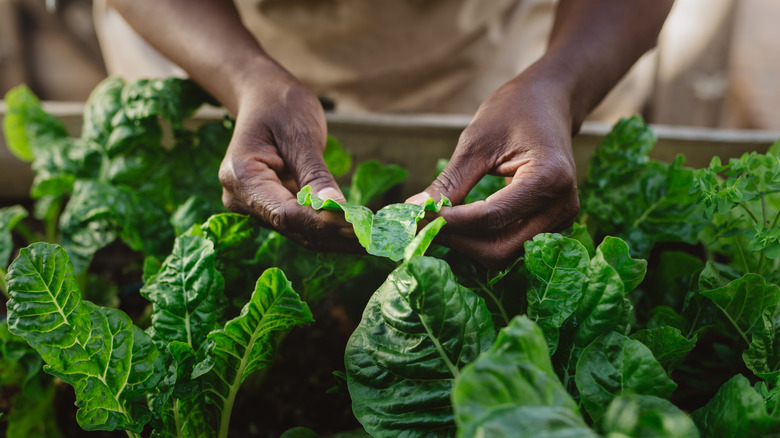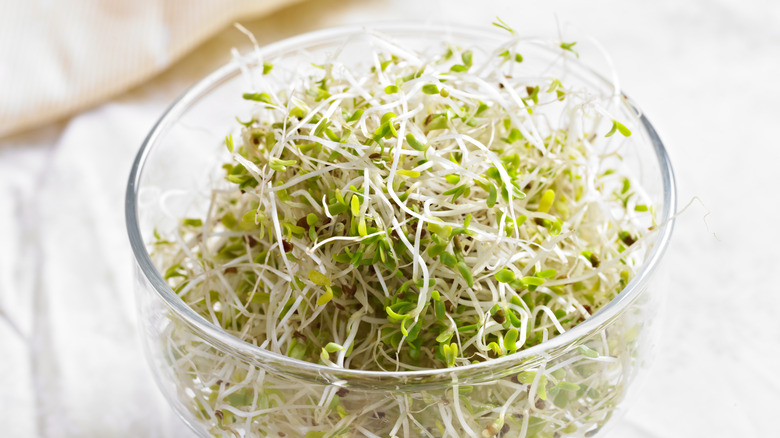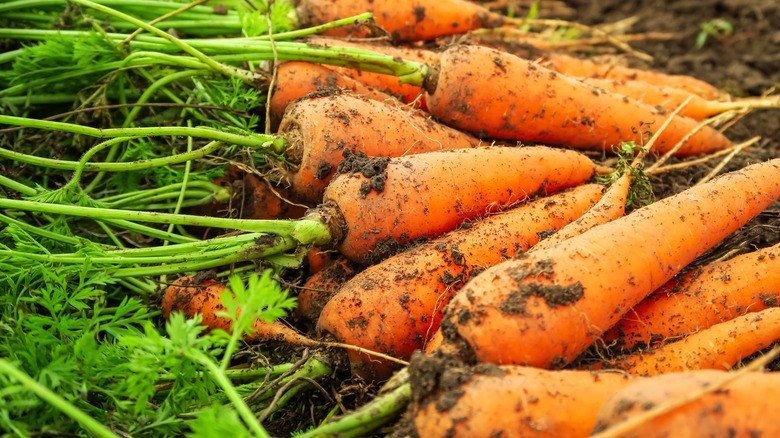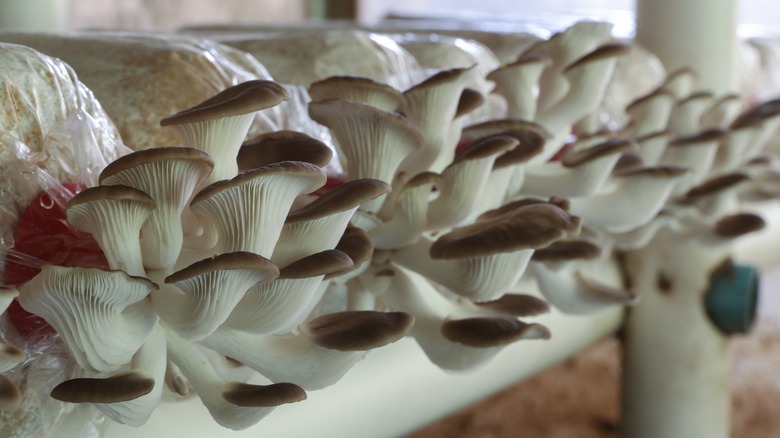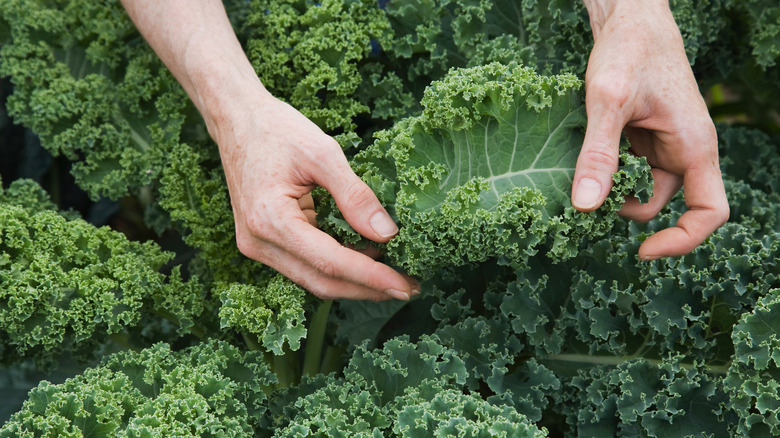10 Plants That Are Perfect For Starting A Garage Garden
You may have heard of overwintering plants in the garage to keep them safe from frost and freezes while they're dormant. It's a proven practice experienced gardeners have long recommended, and if you've tried it, you know it works. But what about actually growing some veggies for soups and salads over the winter months in the garage? Yes, you absolutely can! From peppers and potatoes to mushrooms and kale, you can indeed grow vegetables (and fruits and fungi, too) in your garage.
Of course, you might be more focused on growing produce outdoors in the summer months, but if you want to continue that practice as the weather cools, start planning now. Clearing the clutter in your garage and gathering what you need for adequate lighting, warmth, and humidity are all considerations. You may also have to think about procuring extra tables, benches, or shelving. By the time you start to feel the first chill of fall, though, you'll be ready to move your gardening skills into the garage and get your planting underway. Need a bit more inspiration? Here are 10 plants you can grow in your newly established garage garden.
1. Peppers
There are several different types of peppers that can grow well inside. Most of these are compact varieties that will yield many colorful peppers per plant. For instance, you can choose banana peppers for a mild variety or jalapenos or serranos for a spicier kick to your harvest. And while you can certainly try growing bell peppers, expect the yield per plant to be low. Many garage gardeners enjoy getting a larger yield of smaller peppers they can enjoy all winter rather than just a couple of bell peppers.
2. Potatoes
While growing potatoes isn't something we usually think about in relation to indoor gardening — much less in a garage — you can actually harvest a crop of potatoes this way. Keep in mind that you'll be using seed potatoes, rather than just picking up a bag from your grocery store since you want starter potatoes that will easily sprout. When you plant them, each one will grow a cluster of tubers. If you're a fan of Yukon Gold potatoes, you're in luck. That's one variety that works well for indoor planting.
3. Herbs
Growing herbs indoors in windowsill gardens is nothing new. But if you prefer to tend to all your plants in one place, you can add them to your garage garden. Which herb varieties grow best in an indoor setting? Try your hand at growing sage, rosemary, mint, basil, oregano, thyme, and chives since these will all happily grow indoors in containers. You may only need one plant each for occasional flavor boosts when cooking or you can grow several basil plants if you plan to whip up some pesto.
4. Lettuce
While you might think of big, beautiful heads of lettuce when you think about this leafy green, those aren't the varieties best to focus on for garage gardening. They take up too much space. What you'll want instead are loose-leaf lettuces like Green Ice or Grand Rapids. These grow with a small amount of soil making them perfect for indoor gardens. You can also pick just a few leaves at a time for sandwich toppings or a small side salad and leave the rest to harvest later.
5. Tomatoes
Many backyard gardeners love growing their own fresh tomatoes during the summer months. They say there's nothing like them when it comes to juiciness and taste. The good news is that tomatoes can also be grown during the winter in garage gardens. Some of the best choices for growing indoors are plum and cherry varieties since they ripen more quickly. Even though they take up additional space, consider vining tomato plants (also called indeterminates) for the best result. Keep minding the plants after they start producing fruit and you'll have a good harvest all winter long.
6. Spinach
Spinach is another leafy green that grows well for indoor gardeners. One of the reasons is that the plants stay small letting you make the most of your garage garden space. They also keep producing their nutritious leaves over several harvests. You'll find that with the right soil, water, and adequate light, spinach isn't difficult to grow in a garage garden. Keep in mind that if you're planting seeds, you may also need a heating source to get them to sprout. After that, though, they don't mind being on the cool side.
7. Sprouts
Want to up your intake of B vitamins, vitamin C, and some beneficial antioxidants? Add one of many varieties of sprouts to your diet, and you can reap copious nutritional benefits, according to the American Heart Association. Mung bean sprouts and alfalfa sprouts are two of the most common you can grow on your own. There are special sprouting trays you can use, but you can even grow them in glass jars. Do a bit of research to decide which type of sprout and method is right for your garden.
8. Carrots
Did you know the average American consumes about 12 pounds of carrots per year? You can supplement your intake by growing tasty carrots in the winter. You can grow baby carrots in containers of various sizes; longer carrots require deeper pots. For instance, standard-sized carrots will need a pot 10 to 12 inches deep. Consider planting your carrot seeds every two weeks to keep a steady supply for your kitchen throughout the winter. When they're ready to harvest, just pull them straight out of the pot.
9. Mushrooms
Most people lump mushrooms into the vegetable category since they're used for cooking and salads in the same way as other types of produce. They are, however, part of the Fungi realm. If you love them, you'll be happy to know that you can grow them yourself in a garage garden. There are quite a few different varieties of mushrooms you can grow indoors, including oyster mushrooms, reishi, and maitakes. Many beginners start with blocks or bags that have been injected with mushroom spores and they'll indeed sprout in the right conditions.
10. Kale
We haven't overlooked kale as one of the leafy greens you can indeed grow in a garage garden. Like many of the other veggies on our list, picking the right variety is key. Dwarf kale plants tend to be much more manageable in indoor gardens, including Red Russian, Dwarf Blue Curled Scotch, Lacinato, and Redbor. Any of these varieties should perform well for you and yield a good amount of kale. With some experimentation, you'll discover which plants will thrive in your garage garden and enjoy a bevy of fresh produce all winter long.
